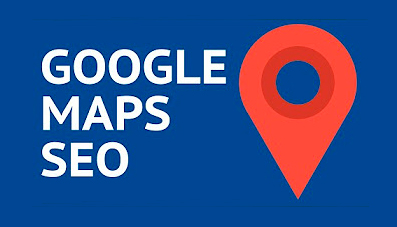Digital Brand Identity Essentials – How to Build, Resonate and Grow
Successful branding requires consistent communications both on and offline. The question is, is your digital brand identity consistent and congruent with what your brand stands for? Does your brand strategy fully integrate your digital brand identity? Does it congruently express what you stand for? Is it well thought out and compelling? Does your digital brand identity connect with your customers, serve them and give them great value? Do your customers even care?
As you build your winning brand on its fundamental pillars, you fill its heart with the essential values of your organization, be that a product or service. You craft your brand promise to let people know what your brand will deliver. To make that commitment heard, it’s mandatory that your brand is active and fully engaged wherever your customers (and potential new customers) are. Increasingly, that’s digital and especially via mobile.
Google Goes Mobile-First
Google got everyone’s attention in April 2015 with an update that put mobile-first indexing on every marketer’s lips.[1] In today’s “always connected” marketplace, small businesses (including those with a bricks and mortar presence) must think digital…more specifically, mobile first, desktop second.
Years ago, marketplace presence might have meant a choice corner shop location in a vibrant neighbourhood, busy shopping mall or flashy billboard advertising supplemented by a basic website.

These days, “A successful website has gone from a ‘nice-to-have’ to an absolute necessity for almost all businesses,” counsels the UK’s National Federation of Self Employed & Small Businesses Limited.[2]
Your digital brand — and what others think about it — is in your customer’s pocket on a 24/7 basis.
Always-On Brands Mean the Future is Now
People just love their mobile devices. Your customers don’t leave the house without their smartphones. In fact, research[3] shows that one-third of Americans check their phones before brushing teeth in the morning.

Image via GigaOm.com
Approximately three-quarters of mobile phone owners sleep with — or next to — their mobile phones (71%).
- Younger Millennials (ages 18-24) are most likely to sleep with their smartphone on the bed (34%).
- In the morning, more than one-third reach for their mobile first thing (35%), before coffee (17%), or a partner (10%).
- A majority (89%) check their phone several times a day (89%), or constantly (36%).
- Nearly half (44%) of Americans say they couldn’t make it a day without their mobile device.
- About one in 10 (11%) respondents say they would last less than an hour. Of those, more than half (52%) check their smartphone at least every 5 to 10 minutes.
Brands Must Avoid Band-Aid Solutions if They Want to Build a Winning Digital Brand Identity
A band-aid solution is nothing more than a quick fix for a systemic problem that’s bound to re-emerge later. If your mobile communications strategy is lagging, there’s a good chance that your brand needs a refresh or a rebranding.
Best practice says that if you’re not reaching mobile customers, it’s time to start…yesterday. It’s no longer a question of which brands gain increased market share by attracting customers via the internet. It’s now a basic question of brand survival.
Writing in the Harvard Business Review, digital consultant and investor Barry Libert says, “Transforming an organization is difficult, and the research proves it. But it is still worth doing. Forrester’s assessment is that by 2020 every business will become either predator or prey. As a leader, you likely already know the basics of managing change, but a digital transformation goes deeper…”[4]
There’s little point for a small business to invest in online presence without taking a deeper dive into the life and the long-term health of your brand. Perhaps that’s where the expression “like brand new” comes from?
If you need to evaluate your brand’s weak points, areas in need of innovation and change and opportunities for growth then now is the time to use the Auditing Analysis Accelerator™ for your brand. It’s an online programme that takes you through, step-by-step, the process of giving your brand a health check. In fact the Auditing Analysis Accelerator™ is a critical brand evaluation process that’s an essential part of every brand owner’s or manager’s toolkit.
How to Know When a Brand Refresh is Required
Consumers and businesses alike are aware that brands age, just like everything does.
- Has your brand seen a drop in sales?
- Is your brand losing market share?
- Has competition for your brand heated up?
- Does your brand message lack oomph?
- Is your brand logo and supporting brand collateral outdated?
- Does your brand still reflect your customers’ preferences?
- Have you got a great new service or product?
- Are you looking to expand your brand’s customer base?
- Has your brand had a merger or created a partnership?
At Persona Design, we share the top reasons why SMEs may need to refresh, revitalize their brand or a complete rebrand and how to achieve successful outcomes for both processes.
The good news is that you don’t necessarily need to start from scratch. But, let’s be perfectly clear about what a brand refresh is not. A brand refresh is not just a new colour for your logo, a tweaked tagline to accompany it and an updated website! A brand refresh is a strategic re-think that provides the key to a company’s long-term survival and market leadership.
The bad news is that procrastination will only make the problem worse.
Why a Brand Audit is the Way Forward for SME Businesses
Large corporate brands are constantly refreshing coupled with developing and launching new services to market. We’ve all seen the parade of boxes on the grocer’s shelf declaring “new, improved.” Car manufacturers produce new models every season to sustain the ever hungry consumer appetite for ‘new’.
Interest builds as Pantone® unveils a new colour of the year to reflect the latest colour trends — also enabling colour aficionados to leverage colour psychology to the full to further increase sales.
As an SME / SMB or smaller business, the timing for a brand refresh is actually a larger undertaking because it isn’t such a frequent occurrence. The first question is: Do you need a refresh or a rebrand, and where to begin? The quick answer is: Don’t guess.
Rebranding strategy is a complex process that allows no wiggle room for getting it wrong. Happily, a brand audit provides a tried and tested tool to nicely remove the urge for any guesswork.
Fine-tune your brand’s identity. A professional brand audit will identify weaknesses and shine a light on opportunities, identifying new areas to grow your brand and potential new customer audiences. These steps are critical before investing in a rebrand, refresh, new website presence or any other brand collateral for that matter.
If your brand message isn’t responsive and on point, there’s no point in an astonishingly beautiful mobile app or web site. If you’re struggling with your brand message to make it standout and be trusted, loved and referred by your preferred customer then the Personality Profile Performer™ is the online brand building programme you need right now.
What a Branding Agency Can Do For Small Brands
It’s enlightening to study big budget, big brand name examples of successful updates that have harnessed the power of the internet. Great case studies emerge:
- The swagger of Old Spice on YouTube (53 million views)
- The cultivation of Harley-Davidson fans
- The story about rebirth of heritage brands like Converse
However, SME brands can achieve big successes with rebranding to include digital presence. Here are several examples:
- A restaurant called Mama’s Pancakes serving only breakfast has added lunch and dinner. A rebrand draws attention to the new hours, midday and dinner menus coupled with a proactive digital brand strategy developed for Instagram and Facebook.
- An accountant’s firm named A Hand for Small Business who focused on business accounting has added individual tax return preparation. A rebrand ensures that her brand speaks to both types of customers. Her digital strategy ensures expert posts on LinkedIn support her repositioning brand strategy, raise her profile and highlight her specialist services.
- A primary school that expands its class offerings, age groups, or single sex status must rebrand and develop a strategy to reach parents of infants and toddlers. Facebook for Business is one way to target custom audiences by demographics and geography.
- A barbershop called Billy’s Beard changes its focus from men’s grooming to a unisex salon needs to rebrand both in-store and online. The owners embrace a presence on Pinterest and Instagram to supplement their mobile responsive website.
- A long-term serviced apartment complex called Urban Homes that now markets to short stays needs to rebrand to compete with hotels and private home rentals such as Airbnb. A completely revamped online presence is required.
Are you an SME / SMB business owner?
Think about these six questions to ask yourself about the state of your brand’s health:
- How can I identify new growth opportunities?
- Am I completely happy with my current market share?
- Is my brand promise resonating with my customer base?
- Does new business walk in every day? If so, do I know what prompts it?
- Am I completely happy with my brand packaging? My brand’s online presence?
- Do I have a 1-year, 3-year, and 5-year business plan in place?
[1] https://support.google.com/adsense/answer/6196932?hl=en
[2] http://www.fsb.org.uk/first-voice/fifty-great-tips-to-building-a-winning-website
[3] http://newsroom.bankofamerica.com/files/doc_library/additional/2015_BAC_Trends_in_Consumer_Mobility_Report.pdf
[4] https://hbr.org/2016/07/7-questions-to-ask-before-your-next-digital-transformation




